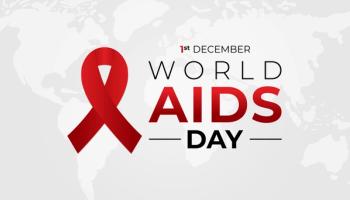Testing for Determining HIV Resistance
Medical experts provide an overview of testing considerations for MDR HIV.
Episodes in this series
Eugene McCray, M.D.: HIV [human immunodeficiency virus] drug resistance is determined by doing a number of tests. There are 3 types, there’s genotypic testing, phenotypic testing, and then there’s a less frequently used form of testing called proviral DNA [deoxyribonucleic acid] test. These detect drug-resistant HIV viral strain. The genotypic resistance assay detects drug susceptibility by comparing a patient’s viral DNA sequence to a wild-type reference sequence. That’s the one that is most often recommended to patients if it’s available to them. The phenotypic resistance assay is where they expose a sample of the patient’s HIV to all available antiretroviral drugs at different concentrations, and they measure the virus’s ability to replicate in the presence of those drugs. This test is important because it can determine which drugs will work and which drugs no longer will respond to the ARV [antiretroviral therapy] regimen the patient may be taking.
And then this last one, the proviral DNA assay, is a genotypic resistance assay that’s designed to provide drug-resistance data on virologically suppressed patients. Let’s say you have a patient who is on an ARV regimen, their virus is suppressed, meaning it’s less than 200 copies/mL. And for some reason, due to quality of life issues, etc., they want to change their regimen. So you might want to do an assay, and the proviral DNA assay is a test that can be done to see if there’s resistance in the presence of viral suppression. It’s a little complicated, but when your virus is very low, it’s very difficult sometimes to detect resistance because the virus is not at a high level and replicating. That’s what the proviral DNA assay helps us do. As I mentioned earlier, a genotypic rather than a phenotypic test is the preferred resistance test to guide therapy in antiretroviral-naive patients, meaning, somebody who is getting on an ARV regimen for the first time.
Drug resistance testing should be done in treatment-naive patients before therapy is initiated. When that person comes in and they’re diagnosed with HIV, ideally on that same day or very shortly thereafter you want to get through the blood work and get viral resistance testing. The bottom line is that baseline-resistance testing is recommended for all people with HIV at entry into care to guide the selection of their initial antiretroviral therapy. And again, standard genotypic testing is what we recommend. Now, in treatment-naive patients, we recommend that you start treatment immediately, and there are a number of initial regimens that are very good and will work even in the presence of, say, a single mutation to one of the common drugs like a reverse transcriptase or a protease inhibitor, etc. We recommend that resistance testing be done and the person be started on treatment immediately after getting all the other blood work that is required.
Resistance testing in antiretroviral therapy-experienced patients is a bit more complex. What we recommend is that if doctors or providers feel uncomfortable doing this, they consult with an expert who can be critical and provide them with good advice. The bottom line is that HIV drug resistance testing should be performed to aid in the selection of active drugs when switching antiretroviral therapy regimens in patients who have virologic failure. That means that their virus is above 200, or ideally greater than 1,000 copies/mL, and also for people with suboptimal viral load reduction. So, let’s say you start somebody on antiretrovirals, and after six months their virus hasn’t become undetectable. And you wait another three months, and it’s still not reduced to undetectable. That’s somebody for whom you may want to then go and do drug resistance testing to see if they have this drug resistance in the earlier testing.
As I said, assessing and treating a patient who has experienced antiretroviral therapy failure can be complex, and we really recommend that expert advice be sought so that you can get help. This is particularly true in cases where there’s virologic failure and you perform HIV drug resistance testing while the person is taking their prescribed ARV. If it’s not possible to do it while they’re taking their prescribed ARV, you need to do it within four weeks after discontinuing therapy. That’s something that’s really important because a lot of physicians think you must stop the drug, wait six weeks, and then test. No, you want to test them for drug resistance while they’re taking the prescribed ARV regimen. Those are the major points I’d like to make about that.
But the other thing I was going to say, in the case of people who were on treatment previously and then come back a year or two years later and they want to initiate treatment again, you also need to do resistance testing. Again, you need to get a very good history of their ARV drug exposure, and you should start them on treatment immediately as well.
Steven Peskin, M.D., MBA, FACP: The issue of resistance testing and health plans doesn’t really resonate with me personally. The indications of resistance, for example, an opportunistic infection, again, evidence that HIV has reared its ugly head. Certainly, looking at the viral load, which is a standard of care now where we like to see the viral load being nondetectable in persons who are appropriately treated with antiretroviral therapy or HAART, highly active antiretroviral therapy. The issue of resistance and resistance testing is something we would leave in the domain of the clinicians.
In thinking about improving the reliability or predictability of viral load testing, that’s again, where we get into the areas of care management in a population. We have population health programs in diabetes, hypertension, obstructive lung disease, and certainly very importantly, in a condition that is potentially life threatening like HIV. The viral load testing and following the Infectious Diseases Society of America and other authoritative sources on when viral load testing should be done is something that can be facilitated by the health plans through care management or case management programs, and I would argue more importantly, by the clinicians who are tending to these populations. There are people who may fall through the cracks for various reasons related to social drivers or social determinants of health, and the health plan can help to sometimes close those gaps. We at Horizon Healthcare Innovations are using community health workers, and those folks can be very instrumental in giving counseling and coaching to patients, whether it be in HIV, diabetes, or some other chronic condition.
Transcript edited for clarity.
Newsletter
Get the latest industry news, event updates, and more from Managed healthcare Executive.






















































